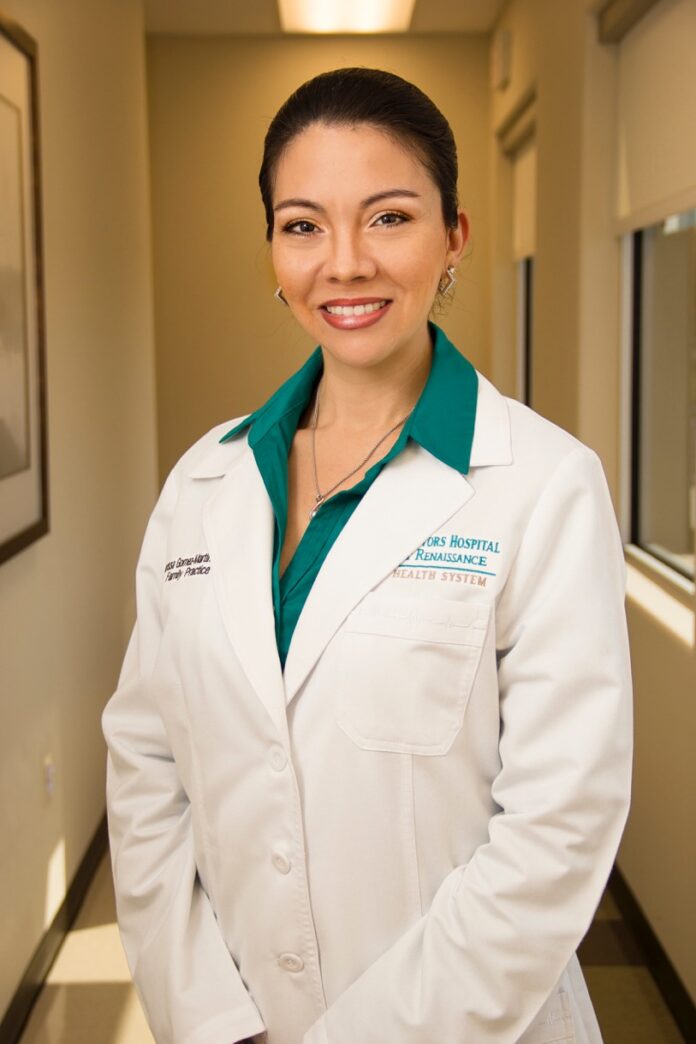
By Dr. Marissa Gomez-Martinez, DHR Health Edinburg CISD School Based Health Center
There is a lot of uncertainty around COVID-19, including evolving healthcare guidelines, due in part to the fact that SARS-CoV-2, the virus that causes the COVID-19 disease, is new. As a new disease, there is no vaccine for it and no evidence-based treatment for it. We are facing a pandemic with COVID-19 because of how many people the disease has affected globally and how highly contagious it is.
That’s why our response to COVID-19 is very different from the flu and other infections that affect the world. With infections like the flu, many people and most healthcare workers are protected through the influenza vaccine, community immunity due to large portions of the population being immunized and exposure over time. There are also FDA approved medications that have been tested and proven effective to treat the flu.
It’s important for our community to understand that COVID-19 is not the flu and is unlike anything we’ve ever seen, and that’s why we have to follow guidelines put in place by the Centers for Disease Control and Prevention as well as those activated by our local, state and federal governments to prevent the spread of it in our community. The only “treatment” we currently have is prevention, and that’s something EVERYONE can help with by staying at home, social distancing when leaving the house for essential needs, wearing masks, practicing good hygiene, and self-quarantining when needed.
Staying at Home (even for Easter)
Texas as well as all of the counties in the Rio Grande Valley have issued ordinances mandating that people stay at home, only leaving the house for essential services or business. This is the best way to prevent the spread of this highly contagious disease in our community. While it may be hard, this includes staying at your own residence for Easter this year. We cannot afford the potential spread of COVID-19 that may result from gathering with extended family in town or out of town for traditional Easter celebrations. Visiting family members puts everyone at risk, and in fact, reports indicate that an increase in cases locally is linked to community spread, some of which are within the same family. Remember, COVID-19 can be spread through individuals for up to three days before showing any symptoms. If families gather during the holiday, we will see an increased number of those infected in the one to two weeks after the holiday, which will only prolong this pandemic and current lockdown.
Social Distancing
If you absolutely must leave home for work or essential services, like going to the grocery story, it’s important to practice social distancing by limiting face-to-face interactions, including hugs, staying at least six feet away from others, and avoiding gathering in groups or crowds. For groceries, consider delivery or designate one family member to run errands for the family while others stay home.
Wearing a Mask
In addition to social distancing when you have to leave the house, the CDC now recommends wearing cloth face coverings in public settings. This also aligns with new local ordinances mandating these types of masks in public. Please save surgical, isolation and N95 masks for healthcare professionals and first responders who are potentially exposed to COVID-19. Common household materials or attire can be used for cloth face coverings. Visit CDC.gov for sew and no-sew instructions to make cloth face coverings with supplies you have at home.
Good Hygiene
Hygiene is of utmost importance during this time. Frequently washing your hands for at least 20 seconds with soap and water is still very important. Using sanitizer is a good alternative. Other tips include: avoid sharing utensils, drinking cups, sheets and towels. Wipe down frequently shared surfaces and allow disinfectants to air dry. Remove your shoes before or as soon as entering your home.
Self-Quarantining
People who have been potentially exposed to COVID-19 whether through interactions with a person who has been exposed or tested positive or through travel, need to stay home for 14 days. Current travel guidelines change frequently and can be found on the CDC website. Avoid all nonessential travel at this time.
Self-Isolation
Please isolate yourself from others within your home if you feel you may have symptoms associated with COVID-19. This will help protect those in your household. Please do not leave your home. Instead, call your doctor/healthcare provider for guidance on what to do next and most importantly, avoid exposing yourself to others, including healthcare providers.
Protecting our Community
It’s very important to follow these tips to prevent further community spread of COVID-19. The disease has not yet peaked in the Rio Grande Valley, although there’s an increase in cases now due to those who traveled during spring break, bringing the illness back to the RGV. Additionally, we’re still seeing patients for common respiratory illnesses and seasonal allergies with symptoms that mimic COVID-19.
Many doctors, nurses and other healthcare workers are falling ill from the disease, and many have lost their lives. We’re here to help everyone remain healthy. I urge you to do your part in containing this horrible disease by staying at home even during this Easter holiday. Please help us to continue to “flatten the curve” of infections and save lives.




